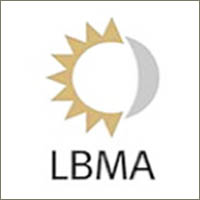|
The LBMA, which stands for the London Bullion Market Association, plays a huge role in the bullion markets and may be the difference between you receiving genuine gold from a trustworthy supplier, and being deprived of your money and left with nothing. You will often see the words “LBMA Certified” or “Good Delivery” in connection with gold and silver bullion, and these claims can only be made by companies and bullion that meets a rigorous standard. At GoldBroker, for instance, all of their bulk gold is given this tag, and not without justification. So, what does it mean to be certified, what is the LBMA and what are the standards that it sets?
|
The LBMA Association in London

Gold Standard by LBMA, London
Simply put, the LBMA is a trade association that is located in London and represents the bullion trade in that city. This is not just any bullion market though, because London is not just any city. The LBMA is a base for some of the richest traders in the world, including global banks, funds and refiners.
The LBMA was created by the Bank of England back in the late 1980s, as the BOE were the ones tasked with regulating the bullion market at the time. Since then, they have set the standard for gold bullion. They are the ones who set refining and purity standards, the ones who facilitate trades with the biggest suppliers and, by default, the ones who set the value of gold.
What is the Good Delivery List?
The Good Delivery list was created by the LBMA and defines the standard for gold and silver bullion in the industry. It outlines a list of strict criteria, and if a refiner wants their products and their company to appear on this list, then they must meet every one of them. For bullion refineries, a placement on the Good Delivery list is an acknowledgment of trust, security and quality, it is all they need to achieve the recognition that they deserve and to see a marked increase in sales. To a customer, the Good Delivery list is a way of determining whether a particular refinery and a particular product is what it says it is and can be trusted.
If you are looking to buy gold or silver in large quantities, then you should invest in a bar that has been given Good Delivery status, also known simply as a Good Delivery Bar.
What are the LBMA Specifications?
So, what are these specifications? Well, if you want to get onto this list, joining some of the biggest names in bullion, then you need to meet all of the following standards:
Gold
- Dimensions: The bar must be a specific length and width, with an undercut that is between 5 degrees and 25 degrees.
- Purity: The minimum fineness for gold on the Good Delivery list is .995, or 99.5%
- Marks: As well as a stamp that indicates the fineness to four figures, the bar must also be marked with a serial number, an assay stamp and a year of manufacture.
Silver
- Dimensions: The undercut of all silver bars on this list must be between 5 degrees and 15 degrees, and there are also specific requirements for the length, the width and the height of the bar.
- Purity: There is a minimum fineness of .999 required for all silver bars included on the silver Good Delivery list.
- Marks: As well as a mark of fineness to three significant figures, the bar must also include the year that it was created, a serial number and an assay stamp.